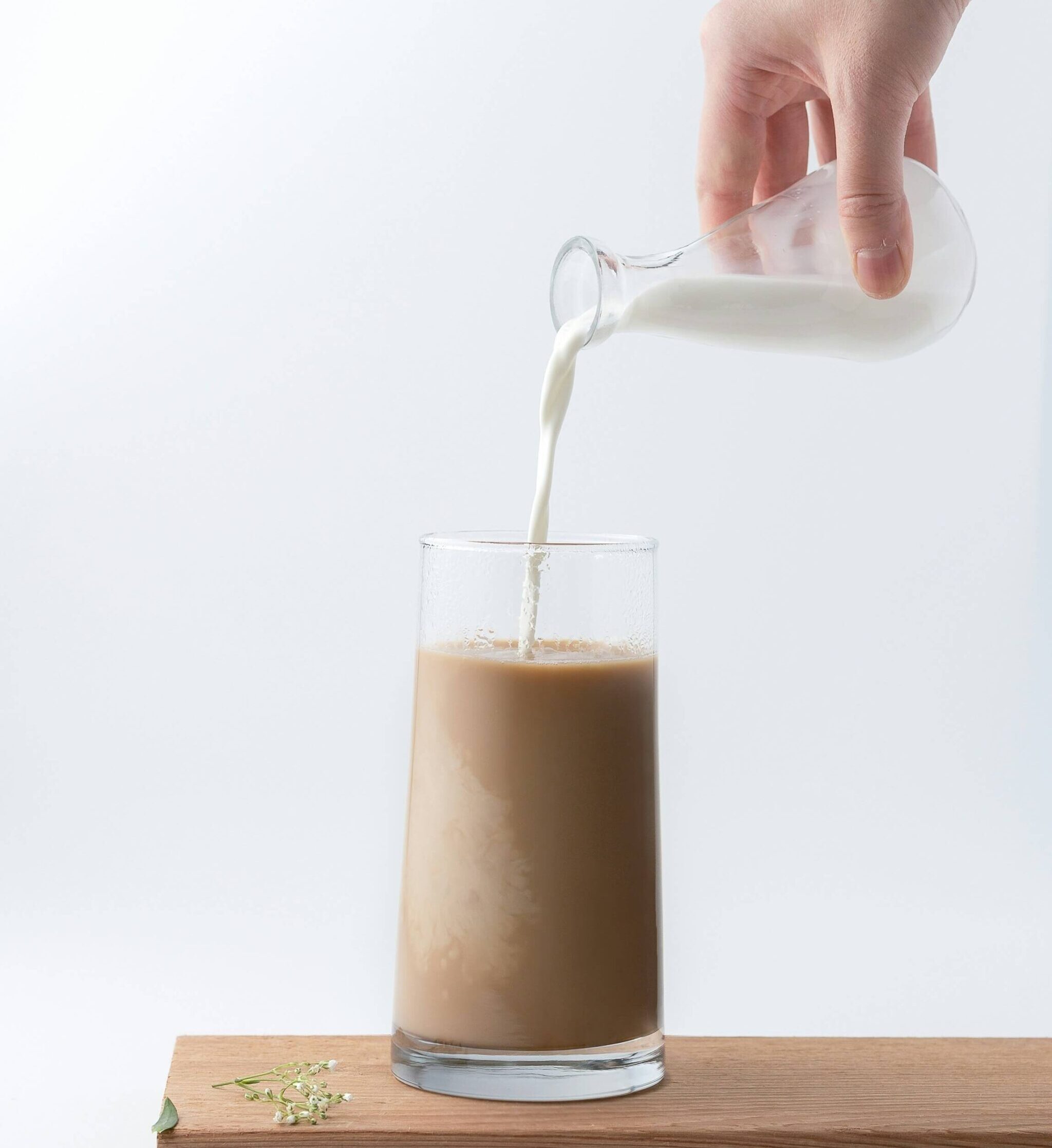In a 2023 study titled “The effect of 8 weeks of combined resistance training and chocolate milk consumption on maximal strength, muscle thickness, peak power, and lean mass, untrained, university-aged males,” researchers explored the effects of chocolate milk consumption in combination with resistance training on maximal strength, body composition, and peak power in 22 healthy, but untrained male university students.

Participants were randomly divided into two experimental groups: the Resistance Training Chocolate Milk (RTCM) group and the resistance training (RT) only group.
The RTCM group consumed high-protein chocolate milk within half an hour after each strength training session, while the RT consumed pudding with no protein.
The nutrient profile of the 500 mL (~2 cups) of high-protein chocolate milk was: Calories 225, Protein 30 g, Carbs 25 g, Fat 5 g.
The nutrient profile of the 50 g (~2 cups) of pudding was: Calories 251, Protein 0 g, Carbs 11 g, Fat 1.25 g.
Though all participants experienced positive changes, the RTCM group experienced the most significant improvement in maximal strength, body composition, and peak power compared to the RT group.
- One rep max (1 RM) increased by 37% for the RTCM group and 18% for the RT group.
- Body fat percent decreased by 19% for the RTCM group and 7% for the RT group.
- Peak power increased by 38% for the RTCM group and 14% for the RT group.
Consuming high-protein chocolate milk after resistance training may stimulate net muscle protein synthesis, leading to greater muscle hypertrophy and improved muscle performance.
These results are consistent with previous studies showing the benefits of consuming 20 grams or more of protein after resistance training.
Moreover, study participants in the RTCM group consumed about 31% more protein daily than the RT group. It’s possible the results were due to greater total protein and not the timing of nutrition.
The paper didn’t explain what constituted “high-protein milk.” As far as I can tell, the only commercially available product that comes close to the nutrition profile of the milk used in the study is Fairlife’s ultra-filtered chocolate milk.
Fairlife’s chocolate milk comes in a 414 mL (1.75 cup) bottle, containing 250 calories, 23 g protein, 22 g carbohydrate, and 8 g fat. Unfortunately, getting your hands on Fairlife’s chocolate milk is not easy.
The best thing would be to mix up your own. The recipe below is one I’ve been testing out.
Chocolate milk recovery drink ingredients:
- 2 cups Organic low fat (1%) milk
- 1/2 scoop Optimum Nutrition chocolate whey protein powder
- 1 tablespoon Now Sports dextrose (glucose)
Nutrition per serving: Calories 315, Protein 28 g, Carbohydrate 35 g, Fat 7 g.
I added a tablespoon of dextrose to make the protein-to-carbs ratio more consistent with regular milk. Milk has 1.5 times more carbohydrates than protein. And dextrose supports muscle glycogen replenishment.
You can change the amount if you want more or less protein or carbs.
Meeting your macro totals for the day may be more important than when you consume those macros. If you need 180 g of protein a day, you will be eating often.
Following training, there is a window of opportunity to push vital nutrients into the system. And milk is an cheap and easy way to do it.
Yapici, Hakan, et al. “The Effect of 8-Weeks of Combined Resistance Training and Chocolate Milk Consumption on Maximal Strength, Muscle Thickness, Peak Power and Lean Mass, Untrained, University-Aged Males.” Frontiers in Physiology, vol. 14, Mar. 2023, p. 1148494.